If you have diabetes or are watching your weight there’s a good chance you look at the amount of sugar on” Nutrition Facts” labels. Today we’ll talk about what this really means. l will also as discuss the varieties of sugar and what to look at on the label to make the best choices.
My friend Mary would only buy food that contained had 8 grams or less sugar. That seemed like a good limit given that she had recently been diagnosed with diabetes. She had already eliminated sweet tea and desserts from her diet. She also severely limited her intake of fresh fruit and dairy – noticing that these products often contain significant amounts of sugar. However, there was a problem. Fruit and dairy products are known to be part of a healthy diet. Eliminating those items because of one nutritional component was short-sighted and ultimately not good for her.
My buddy JT was looking at another area of the food label– “added sugars.” In his mind added sugar should be completely avoided because he wanted to “eat clean”. JT only consumed foods with zero added sugar. It took both JT and Mary a long time to shop. Like Mary’s misguided effort, JT’s goal of zero added sugar was so restrictive that he risked getting burned out and reverting to his prior unhealthy eating habits.
The first thing I did was to congratulate them both for making changes to reach their health goals. Then I provided a few suggestions to make it easier. Maybe they can help you as well.
 First, there is no maximum number of grams of sugar per food serving. Fruit, milk and yogurt are all part of a healthy diet and all contain sugar in its natural state. Many people miss the essential nutrients contained in these items while following the low carb craze. Mary was surprised to learn it was good to add a piece of fruit to her diet, even if it did contain 20 grams of sugar.
First, there is no maximum number of grams of sugar per food serving. Fruit, milk and yogurt are all part of a healthy diet and all contain sugar in its natural state. Many people miss the essential nutrients contained in these items while following the low carb craze. Mary was surprised to learn it was good to add a piece of fruit to her diet, even if it did contain 20 grams of sugar.
Second, having some added sugar can actually be part of a healthy diet. Your food may taste better and your options will be more plentiful if you add a little sugar. Of course, the key is the word “little.”
There is a focus on sugar because Americans do eat way too much added sugar.
That excessive consumption of sugar is a major contributor to weight gain. Two-thirds of Americans are overweight or obese! This epidemic is responsible for causing or contributing to numerous health problems including diabetes, cardiovascular problems, muscle and joint issues, gastro-intestinal issues, etc. Obviously, we have to do something about it.
The 2015-2020 Dietary Guidelines for Americans recommend limiting added sugar to less than 10% of the total calories consumed per day. When the guidelines were released Americans were consuming an average of 13 to 17% of calories from added sugars.
The Dietary Guidelines define “added sugar” as “syrups or other caloric sweeteners used as a sweetener in other food products”. The guideline to limit added sugar is designed to give Americans enough room to enjoy some sweetness while keeping their overall calorie intake at appropriate levels. In other words, if we limit our added sugar, and choose nutrient rich foods, we can nourish our bodies, limit our calories and not gain weight.
Remember, we are talking about limiting added sugar, and not the sugar that is found naturally in food such as fruit and dairy.
Unlike added sugar, most people do not eat the recommended daily amount of these items. So what, specifically should we look for when we are trying to spot “added sugar?” Well, the easiest thing is to look at the grams of added sugar on the label. The amount is more important than the type.
These are considered added sugar:
- Sugar (including brown, raw, malt)
- Syrup (including agave, corn, high fructose corn, maple)
- Honey
- Molasses
- Nectar
- Fructose, Glucose, Lactose, Maltose, Sucrose (these are also naturally occuring in whole foods)
Honey and maple syrup are in this group of added sweeteners, even though the sugar is naturally occurring. They are used as sweeteners and do not contain very many nutrients. There are a lot of gray areas when it comes to food.

The amount of added sugar will be required to be included on all food labels in 2021.
You will see it indented under “total sugar” because the added sugar is included in the total sugar. “Total sugar” is indented under “total carbohydrate” and is included in the total carbohydrate.
If you have diabetes and are eating a consistent amount of carbohydrate make sure you count the grams of total carbohydrate. Do not add the sugar grams to the total carbohydrate. The total carbohydrate includes all the variety of carbohydrate contained in that food, to include fiber, sugar, sugar alcohol, and starch.
Having the added sugars on the label lets you know how much sugar has been added to a product. Remember, the recommended limit is under 10% of your total calories. That would be 50 g of added sugar if you consume 2000 calories and 40g of added sugar if you consume 1600 calories.
Again, do not be concerned about the natural sugar in healthy foods like fruit, milk and yogurt. These are part of a healthy diet, even when you have diabetes.
Where do we find the large amounts of added sugar?
Beverages, cakes, cookies, and candy are the primary suspects. That’s where you should cut back. Did you know a 20 ounce regular soft drink has more than 70 grams of added sugar? That’s over 17 teaspoons of sugar! (Note 1 level measuring teaspoon of sugar is 4g of sugar). That’s also 20 grams more than the recommended amount of added sugar for an entire day if you consume an average of 2000 calories a day. Thirty grams over the recommended amount for a 1600 calorie intake (or almost twice the recommended amount of added sugar).
That’s one soda! In contrast, if you want a teaspoon of brown sugar in your oatmeal topped with nuts, go for it. That gives you only 4 g of added sugar and really enhances the flavor of a healthy breakfast.
What about diet drinks you ask? They contain low and no calorie sweeteers instead of added sugar. They are a good option for people who want to cut down on calories and sugar but still want to enjoy a sweet taste.
Despite a lot of hype, there is no scientific evidence that they cause problems with body weight. They have been studied extensively and are considered safe. They are not “good” or “bad” but an option for people who want a sweet taste without calories.
Low and No Calorie Sweeteners Include:
- acesulfame potassium
- advantame
- aspartame
- neotame
- saccharine
- sucralose
- monk fruit extract
- stevia leaf extra
So, eat smart, eat healthy, don’t completely give up your sweets, but eat them in moderation and enjoy all your food thoroughly.
“Enjoy your food, with health in mind.” – Melissa Joy Dobbins
What questions do you have? I really want to know. Comment below and I’ll answer in a future newsletter or on my Facebook page.
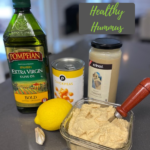

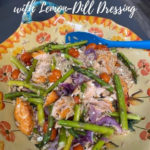
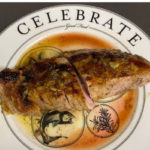
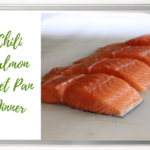
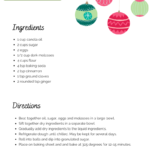
Leave a Reply